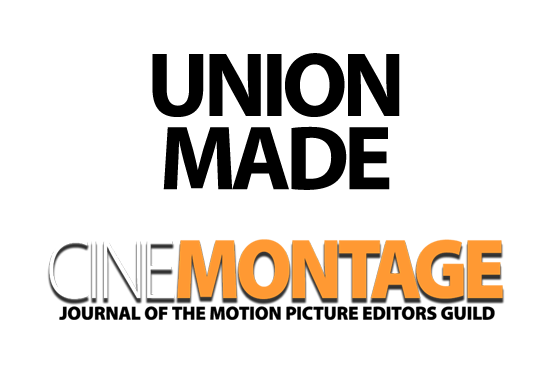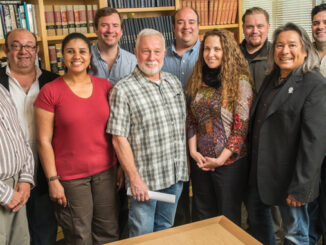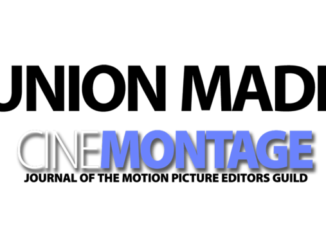
by Kurt Kassulke, CAS
Growing up in Minnesota, I was the son of a doctor mom and stepdad, and a Minnesota Vikings dad. Music filled the house, especially every Sunday with my mother practicing organ for church and my brother and I often prepping solos and duets. I went on to play piano, oboe and bassoon, and take the lead in a couple high school musicals (while simultaneously enjoying multiple sports — lettering in football, wrestling and track). Our family break from this rigorous schedule was to see movies every week. We enjoyed critiquing the evening’s entertainment.
I made my way to Stanford to become a doctor or a musician, with wrestling, directing a student a capella group, and music and film classes filling up my days. My parents counseled against becoming a physician (the joys of family practice were being pushed out by insurance oversight and paperwork), so after graduating with degrees in music and communications, I decided to try to make a living telling stories in sound.
I traveled back to Minnesota looking for an entry-level position or internship, and everyone told me two things: I needed more experience (wasn’t that what “entry level” was for?) and I should head to Los Angeles because no matter how high I might rise in the Minneapolis-St. Paul market, I would eventually have to go to LA and restart at the bottom. I heeded this advice and drove my old Chevy Citation to Southern California.
Once in LA, I discovered another cardinal rule: You needed contacts, of which I had none. After a year of working at Turner Broadcasting’s sales office as an assistant, I was accepted into USC Film School to pursue an MFA in film production. Three years of sound study later — and about 100 student film mixes plus another 100-odd scoring sessions — Professor Tom Holman asked me what I wanted to do; I wanted to mix movies.
Tom became my “connection” and put me in touch with International Recording, a Burbank mixing facility, which hired me as an apprentice. There, I learned the essentials of organizing a mix — from loading dubbers (the sprocket-driven machines on which the sound reels cut with magnetic film and leader are played back) and projectors to writing out cue sheets in order to organize the pre-dubs.
The main stage featured a non-automated console that made pre-dubs fed by both dubbers and 24-track tape machines and recorded onto three, six-stripe magnetic film recorders. The main mixer, Jeffrey Perkins, worked closely with me, showing me precisely how to organize pre-dubs for maximum expression while still maintaining separation and control. I learned to create two Left, Center and Right mixes for footsteps and props (remember we had only six tracks with which to work), and divided six track mixes (Left, Center, Right, Left Surround, Right Surround and Boom) between, for example, good guy guns on one six track and bad guy guns on another, in order to use the full capabilities of the newly developed Dolby Digital format.
Separation with expression and efficiency was always the goal. I credit this strategic dub thinking to much of my continued success. Once I began to master dub organization, I moved up to assisting on mixes and finally manning the sound mixes on my own — often using teamwork to create the pre-dubs — one mixer controlled the volume of multiple channels at the board, while the other ran multiple panners to place the location of all the objects (feet and props, engines and tires, or guns and bullets across the screen and over your head).
After a couple of years, I learned another Hollywood lesson: Experience counts! The production company wanted a more experienced re-recording mixer, so they hired a multiple-Oscar nominee to replace me. International gave me a good recommendation for other jobs, but I was unemployed!
I had to scramble, but within a few months I found another job and have been working as a re-recording mixer ever since. I moved from lower-budget facilities to increasingly better-organized companies and am currently at Technicolor on the Paramount lot. There have been plenty of new technologies to learn along the way (from Otari through SSL, Neve to Icon and Euphonix, and an ever greater array of digital recording formats and delivery options), but mixing is still telling a sonic story as expressively as possible for the picture and people in front of you.
I am honored to have worked with some fantastic post-production personnel and, through that collaboration, even managed to receive multiple Emmy and CAS sound-mixing nominations, as well as an Emmy Award for Ally McBeal along the way.
I would never have predicted I’d end up spending my days playing with sound in a darkened room, but an avid interest in music and movies found their natural expression. For that, I am so grateful…I might just have to sing!




